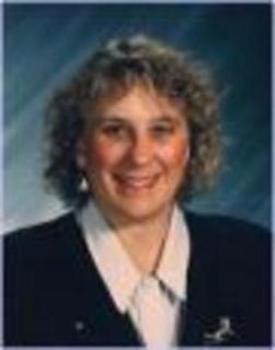This text-based course is a written transcript of the course, "The Effect of Cultural Influences Upon Classroom Behavior", presented by Jomar Lococo on November 29, 2010.
This text is being provided in a rough draft format. Communication Access Realtime Translation is provided in order to facilitate communication accessibility and may not be a totally verbatim record of the proceedings.
Click Here to View Supplemental Handouts
Click Here to View References
>> Amy Hansen: Good afternoon, everyone. Welcome to today's expert e seminar, "The Effect of Cultural Influences Upon Classroom Behavior," presented today by Jomar Lococo. My name is Amy Hansen. I will be your moderator for this online course. At this time it is very much an honor and pleasure to invite back Jomar Lococo this afternoon. Jomar has been a speech language pathologist in practice since 1974. She has worked in a variety of professional settings including public schools, higher education and private practice. Ms. Lococo holds ASHA certification and is dually licensed in both California and Oregon. Since 1985, Ms. Lococo has provided professional services to second language learners from five continents. In 1997, she received her certification as a teacher of English to speakers of other languages. Ms. Lococo has lectured extensively on topics such as work with second language learners, and she has been an invited speaker in local school districts and regional offices of education, and has given referred presentations at both state and national conventions. Welcome, Ms. Lococo, and thank you for sharing with us your expertise today.
>> Jomar Lococo: Thank you. It is great to be here. I think where I want to start is just talking for just a moment about culture. One of the things that we are often asked to do in the course of our work, especially as public school speech pathologists, is deciding whether the child or student or young adult we're looking at is showing us a language difference which is ESL, or language disorder. One of the ways that we do that with our second language learners is by looking at their rate of progress over time and comparing them with other students who are of the same education, language, family, social, and cultural background. A child who we know is an ESL learner is going to be demonstrating an accelerated rate of progress, whereas the special ed. child may be moving through the same steps but at a little bit slower rate. The issue of culture is one of the things that I think we need to consider, because we're using it as part of our comparison to determine whether we should move ahead with assessment or identify this child as a child with a problem.
Today we're going to talk about that culture filter and do some thinking about it. A newcomer is definitely going to have a thicker cultural filter than someone who was born here. Students with parents of another culture, that is, parents who were born in another country, will have a thicker filter. And the older the student is, the more established the culture may be. Because they may have been schooled in another country or have been using another language, the harder it is going to be for them to make some adjustments, especially with social rules and nuances.
We're going to go through and talk about some cultural continuums that will help us do some filtering for our students. Regarding culture, there are a couple of things I want to define. By culture, I'm thinking of any culture, whether it is a country culture, deaf culture, social culture, or whatever. But in particular, my work has been with second language learners who are coming to the United States from other countries, so you'll hear me talk more about that type of child or that type of student.
The Effect of Cultural Influences Upon Classroom Behavior
April 29, 2011
Share:
